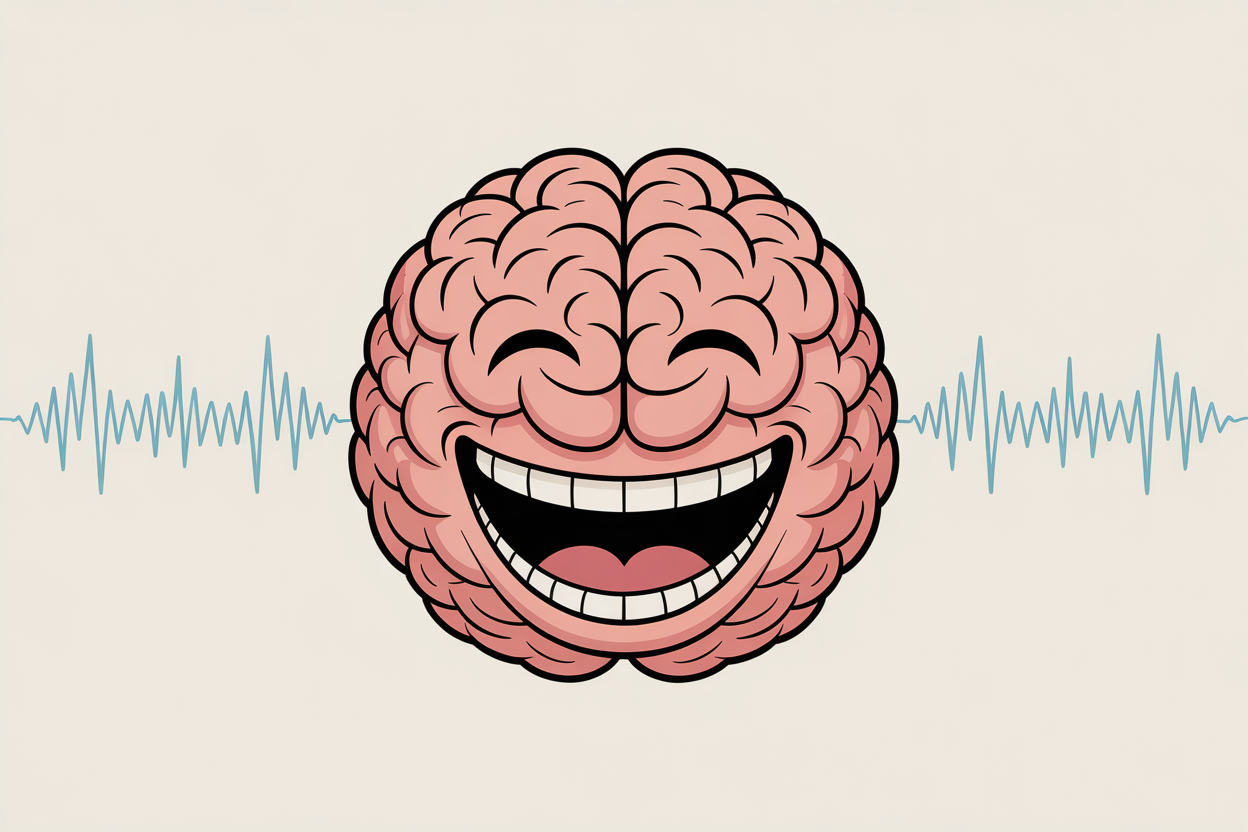informational
Why Do We Hate Being Tickled but Laugh? The Science Explained
As a neuroscientist, one of the most common questions I hear is why being tickled feels like a strange mix of fun and torture. You find yourself laughing uncontrollably, yet desperately wanting it to stop. This puzzling response has confused people for centuries, from Aristotle to today’s brain researchers. Fortunately, as of 2025, modern brain research has explained the sophisticated neurological and evolutionary reasons behind this paradox.
The Two Types of Tickling: Understanding the Basics
Scientists distinguish between two distinct types of tickling:
1. Knismesis – A light, feathery tickling sensation.
- Feels like a bug crawling on your skin.
- Serves as a protective warning system.
- Rarely causes laughter.
- Functions as your body’s early alert system.
2. Gargalesis – Intense, laughter-inducing tickling.
- Happens when someone deliberately tickles your ribs or feet.
- Produces the paradoxical laugh-while-hating-it response.
- Emerges in human infants around 6-7 months of age.
- Coincides with key developmental milestones, including self-other distinction, early social bonding, and interactive play behaviors.
It’s a classic party trick to ask someone why they can’t tickle themselves. The reason is surprisingly simple: your brain’s cerebellum is a spoilsport. It predicts your own movements and essentially cancels out the sensation before it can register as a tickle.
Your Brain on Tickling: The Neural Activity
When someone tickles you, multiple brain regions activate simultaneously:
| Brain Region | Function During Tickling |
|---|---|
| Somatosensory cortex | Processes physical touch signals |
| Hypothalamus | Manages emotional and stress responses |
| Anterior cingulate cortex | Acts as a conflict monitor between safety and threat |
| Periaqueductal gray | Triggers involuntary laughter |
| Thalamus | Coordinates sensory processing |
| Caudate nucleus | Involved in movement and reward |
Brain scans show that tickle-laughter activates completely different pathways than laughter from a good joke. While genuine humor engages your frontal lobes for conscious processing, tickle-laughter takes a shortcut, bypassing these areas to activate more primitive brain regions [1, 2].
The Neurochemical Cascade
During gargalesis-induced laughter, your brain releases a precise sequence of chemicals:
Within seconds:
- Endorphins – Natural opioids producing pleasure and pain relief.
- Dopamine – Creates pleasure and reward sensations.
- Oxytocin – Promotes social bonding and trust.
Hormonal changes:
- Cortisol – Decreases, reducing stress and anxiety.
- Adrenaline – Briefly released during intense tickling, creating heightened alertness.
This rapid chemical sequence explains why tickling simultaneously produces sensations of pleasure, panic, and even pain 3.
Why Evolution Made Us Ticklish
Defense Mechanism
Your most ticklish areas, neck, ribs, armpits, feet, are also your most vulnerable body parts. Ticklishness likely evolved to protect these regions by making us hyper-aware of touch. The reflexive squirming when tickled supports this protective function 1.
Social Bonding Function
Tickling creates crucial social bonds between parents and children. This playful interaction teaches social boundaries and reinforces relationships through physical play 4.
Cross-Species Evidence: Who Else Laughs?
Research shows fascinating patterns across animal species. A 2024 study published in Biology Letters found that rats emit high-frequency ultrasonic “chirps” when tickled on the nape, belly, or flanks, genuine social signals indicating enjoyment 5.
Species with Clear Gargalesis Responses:
- Humans and Great Apes – Display obvious laughter-like vocalizations.
- Rats – Emit high-frequency ultrasonic “chirps” when tickled. These function as genuine social signals, and rats prefer playing with other “laughing” rats.
Species with Limited Responses:
- Dogs – Show reflexive movements but no laughter-like sounds.
- Cats – Display reflexive movements in ticklish areas (paws, chin, base of tail) without vocalizations.
Universal Pattern: All social species seem to have ticklish areas on vulnerable body parts, but only rats and great apes produce laughter-like vocalizations, suggesting these sounds evolved specifically for social communication during play.

The Laughter Reflex: Why Your Body Betrays You
Tickle-laughter is an automatic reflex, not a choice.
- Pain and touch nerves fire simultaneously, creating sensory confusion.
- The response originates in your brain stem, below conscious control.
- Stress hormones release even during “fun” tickling.
- Your body responds before your conscious mind can evaluate the sensation.
It’s a genuine reflex, your body betraying your brain’s better judgment. This explains the maddening experience of laughing uncontrollably while wanting nothing more than for it to stop 2.
Medical Conditions That Affect Tickle Response
Autism Spectrum Disorder (ASD)
Individuals may experience:
- Hypersensitivity – Finding tickling extremely distressing.
- Hyposensitivity – Barely noticing tickling sensations.
Neurological Conditions
- Peripheral nerve injuries – Cause reduced or exaggerated responses.
- Spinal cord lesions – Abolish tickle sensation in affected regions.
- Thalamus lesions – Can intensify tickle responses.
- Schizophrenia – May increase tickle sensitivity and difficulty distinguishing self from external touch.
These conditions show how a typical tickle response depends on correctly functioning neural pathways, including the somatosensory cortex, cerebellum, and specific nerve fibers.
Historical and Cultural Perspectives
Ancient Uses as Punishment
- Ancient China (Han Dynasty) – Used tickle torture on nobility without leaving permanent marks.
- Ancient Rome – Employed methods including having goats lick salt-water treated feet.
- Japan – Practiced kusuguri-zeme (“merciless tickling”) as sanctioned punishment.
Modern Recognition
- Early Modern Britain – Used in stocks for additional humiliation.
- Nazi Germany – Documented as an abuse method in concentration camps.
- Contemporary view – Recognized as potential abuse when non-consensual and persistent.
Positive Applications
- Therapeutic contexts – Studied for stress-relieving effects under consensual conditions.
- Developmental importance – Crucial for mother-infant bonding and emotional development.
Why Some People Hate It More Than Others
Research shows roughly equal divisions: about one-third of people enjoy tickling, one-third hate it, and one-third feel neutral. This variation stems from:
- Age differences – Children are generally more ticklish than adults.
- Control issues – People who value autonomy often find tickling more distressing.
- Relationship context – Tickling from a stranger feels threatening, whereas from a family member it can feel safe.
- Neurological makeup – Individual differences in sensory processing and neurodiversity play a role.
The Pleasure-Pain Paradox
The contradictory feeling of tickling comes from:
- Simultaneous activation of pleasure and pain pathways.
- The brain’s reward system and pain processing regions firing together.
- Surprise and unpredictability amplifying the intensity.
- Prolonged tickling shifting from tolerable to genuinely distressing as stress hormones accumulate.
This explains why brief tickling might be enjoyable while extended tickling becomes increasingly unpleasant.
Frequently Asked Questions
Why do I hate the feeling of being tickled?
You hate being tickled because it triggers defense mechanisms. The sensation activates both pain and touch receptors while making you lose control. Your brain perceives it as a potential threat, releasing stress hormones even as you laugh.
Is laughing when tickled a form of panic?
Yes, ticklish laughter resembles a panic response. Unlike humor-based laughter, it originates in primitive brain regions as a reflexive reaction. Brain scans show it is closer to a stress response than genuine amusement.
Why do we squirm when we get tickled?
Squirming is your body’s automatic defense mechanism protecting vulnerable areas. These movements are involuntary, controlled by lower brain regions that activate before conscious thought.
At what age do babies become ticklish?
The gargalesis response typically emerges around 6-7 months of age, coinciding with important developmental milestones, including self-awareness and social bonding capabilities.
So, the next time you’re caught in a tickle fight, you can appreciate the intricate neuroscience at play. This seemingly simple response is a perfect example of how our brains process conflicting signals, balancing the ancient needs for safety and social connection.
1 https://www.discovermagazine.com/the-sciences/why-are-people-ticklish
2 https://academic.oup.com/cercor/article/23/6/1280/426218?login=true
3 https://pmc.ncbi.nlm.nih.gov/articles/PMC6847157/
4 https://pmc.ncbi.nlm.nih.gov/articles/PMC11734381/
5 https://royalsocietypublishing.org/doi/10.1098/rsbl.2024.0543
I'm a Journalism postgraduate, and like every other gen-z, I love a good dose of humor, Italian food, fashion trends, and TV series. I love reading and writing jokes, funny comics and novels. Looking forward to share a good laugh with my readers on jokeinenglish.com















